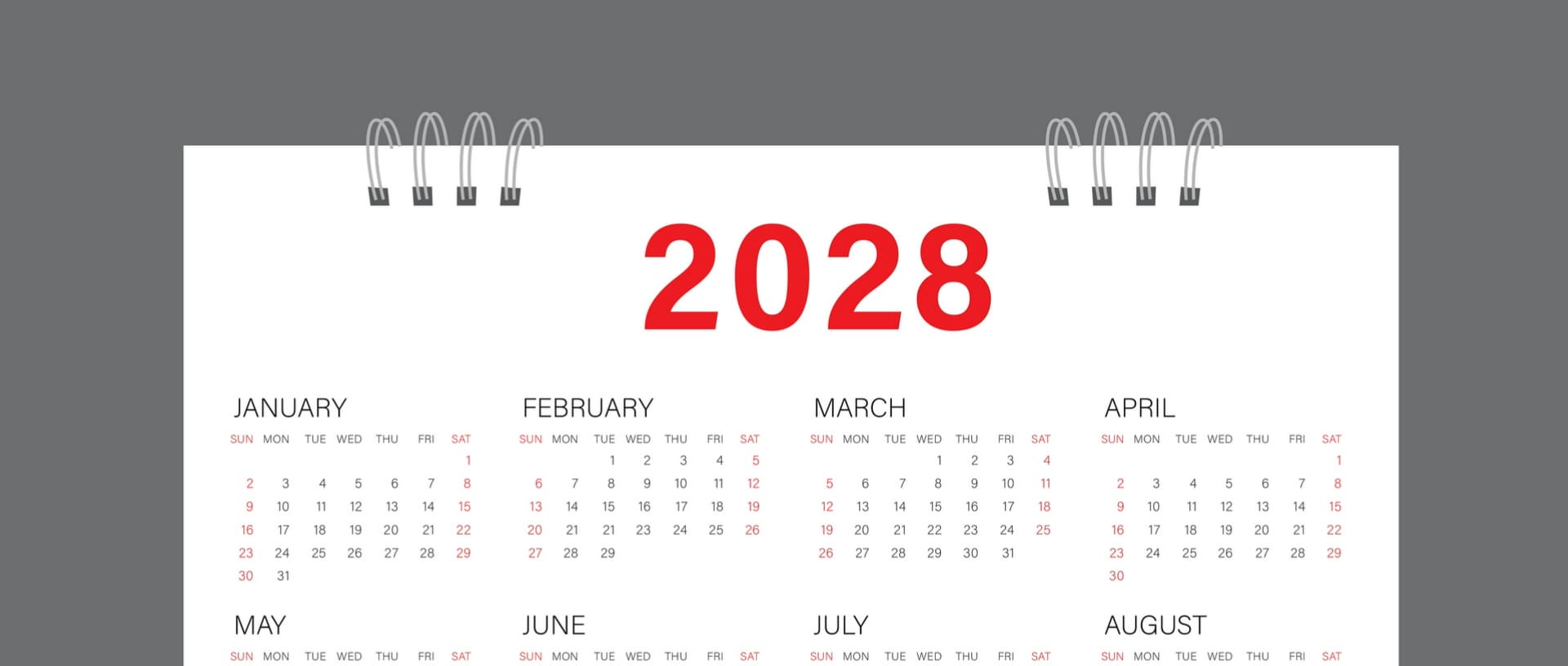What is a leap year and why do we have it?

Many people are familiar with the term "leap year" but few know its definition or the reason why it exists. In this article, we will explore why leap years are necessary and how they are calculated.
Do people born on February 29 age differently?
We will dive into the background of leap years, answer common questions and, in the end, introduce Casio watches that automatically adjust the date - even during leap years.
What is a leap year?
Every four years, there is a year with 366 days in it.
The extra day is added at the end of February, which is why February 29th is also known as leap day.
How to calculate leap years
A leap year is a year in the Gregorian (Western) calendar that meets the following conditions:
- Any year in which the western calendar year is divisible by 4 is a leap year.
- However, a year in which the AD year is divisible by 100 is usually a normal year.
- However, any year in which the Western calendar year is divisible by 400 is a leap year.
For example, the year 2000 is a leap year because it is divisible by 400. On the other hand, 1900 is a normal year because it is divisible by 100 but not by 400.
Why is a leap year necessary?

The main purpose of leap years is to correct the discrepancy between the solar calendar (a calendar based on the position of the sun) and the calendar we use in our daily lives (the Gregorian calendar).
The earth orbits the sun in approximately 365.24 days. Our calendar, however, has 365 days in a year. This results in a discrepancy of approximately 0.24 days each year. If this accumulates, after four years, a misalignment of approximately 0.24 days x 4 = 0.9688 days will occur between the solar and Gregorian calendar dates.
Leap years were invented to solve this problem. The addition of one day in a leap year compensates for this discrepancy. However, since an additional day is added every 4 years, that adds about 0.0312 days (1 day - 0.9688 days) more than the original misalignment.
To further compensate for this approximate 0.0312-day discrepancy, the exception rule for years divisible by 100 and divisible by 400, as described in "How to Calculate Leap Years" above, is applied.
This results in an average number of days in a year of 365.2425 in the Gregorian calendar, with leap years being set 97 times in every 400 years. This is a difference of about 0.0003 days from the length of a solar calendar year (about 365.2422 days), which is not exactly the same.
What if there is no leap year?
Without a leap year, our lives could be affected by the following problems:
- Time displacement: Without a leap year, the discrepancy between the solar calendar year (approximately 365.2422 days) and the Gregorian calendar year (365 days) would accumulate and after a few years result in a significant shift regarding the start of the seasons.
- Agricultural impact: Seasonal shifts could effect our agriculture significantly. A shift in the timing of crop planting and harvesting may affect the produce and quality of the crop.
- Cultural and traditional influence: Many cultures and traditions are based on specific seasons or dates. Without a leap year, these dates would shift and the dates of traditional events and festivals would change inconsistently.
- Impact on economic activity: Seasonal shifts may affect tourism, retail and other seasonally dependent industries.
- Impact on daily life: In the long term, the seasonal shift may affect various aspects of our daily life, such as health precautions and clothing. The term "I have nothing to wear" would definitely be heard more often.
When is the next leap year?

To identify the next leap year, apply the following rules and exceptions described in the "How to Calculate Leap Years" section above.
- Any year in which the western calendar year is divisible by 4 is a leap year.
- However, a year in which the AD year is divisible by 100 is usually a normal year.
- However, any year in which the Western calendar year is divisible by 400 is a leap year.
List of Leap Years in the 21st Century
Below you can find a list of all leap years in this century.
The year 2100 is a normal year because it is divisible by 100 but not by 400.
2004 2008 2012 2016 2020 2024 2028 2032 2036 2040 2044 2048 2052 2056 2060 2064 2068 2072 2076 2080 2084 2088 2092 2096
What happens to people Born on Leap day (February 29)?

For those born on leap day February 29, their birthdays come only once every four years. This can lead to questions and confusion about the treatment of birthdays. In fact, the treatment of birthdays for people born on this special day varies from country to country.
When do you celebrate someone whose birthday is February 29th?
People born on leap day, February 29, only get to have a real birthday once every four years, but they still get older every year. In Japan, those born on February 29 are usually celebrated on February 29 in leap years and on February 28 after 24:00 (March 1) in normal years as their birthday.
Recommended CASIO models that automaticaly adjust for Leap Year
Watches without the option to set the date automatically do not recognize February 29 as leap day. The user has to change the date manually, which is time-consuming.
We introduce three watch functions that automatically respond to leap years, as well as recommended G-SHOCK models.
(1) Full auto calendar
The fully-automatic calendar recognizes leap years and displays the accurate date. This eliminates the need to manually adjust the date.
GA-2100-1A1JF
GA-2100-1A1
This model inherits the "octagonal form" used in the first model. Equipped with a fully automatic calendar, you do not need to worry about leap years.
(2) Radio-controlled watches
A radio-controlled watch receives radio waves with accurate time information and automatically adjusts the time, eliminating the need to adjust for leap years.
GW-M5610U-1
Its classical design inherits and carries on the case shape and dial design of the first DW-5000 model. Equipped with Multi-band 6, the standard radio wave reception, there is no need to worry about setting the date or time.
(3) Bluetooth® Smartphone Link-compatible watches
By connecting the watch to a smartphone via Bluetooth®, the watch can automatically connect to the smartphone four times a day to correct the time.
Summary
A leap year is a special year to adjust for the slight discrepancy between the solar and Gregorian calendars. Every leap year, February 29 will be added as a special day.
In this article, we discussed why leap years are necessary and how people born on leap days are celebrating their birthdays.
We also introduced a few G-SHOCK models, which do not require any special adjustments during leap years.




